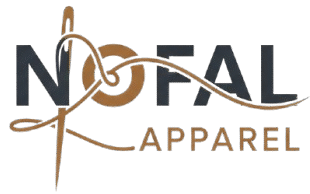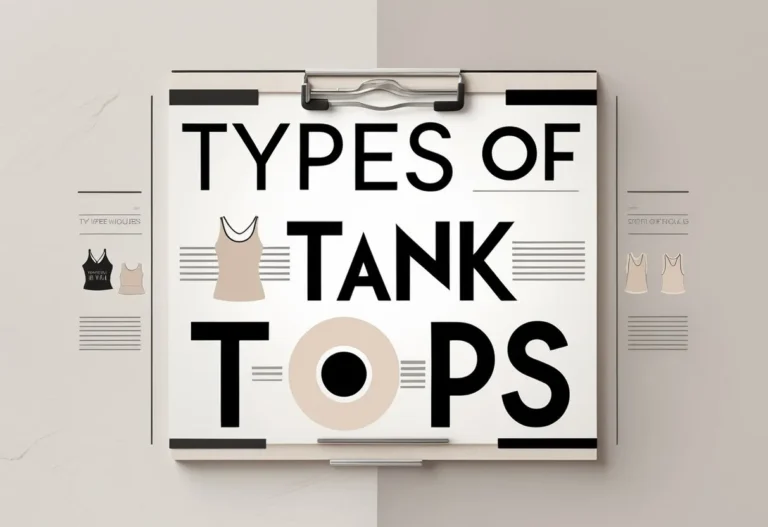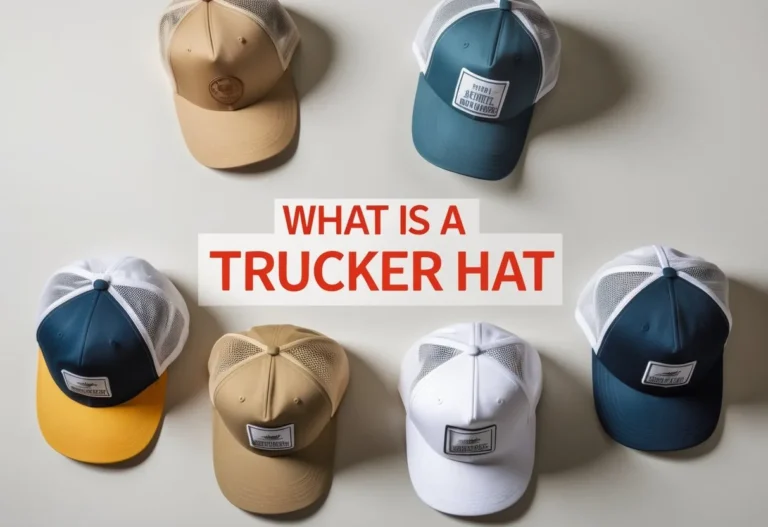Starting a profitable plus-size clothing brand requires more than just designing bigger sizes. Success comes from understanding the unique needs of plus-size customers, creating well-fitting garments that balance comfort and style, and developing a brand that promotes body positivity and inclusivity. The market is growing fast, and filling gaps with thoughtful designs and effective marketing can lead to strong business growth.
Want to turn your passion for fashion into profit? Learn how to start plus size clothing business and create a brand that celebrates every body type.

To launch a brand from scratch, entrepreneurs must research their target audience carefully and work with experienced manufacturers to ensure quality. Pricing strategies should reflect both cost and customer expectations to stay competitive. Using social media and partnering with influencers can help build trust and boost sales in this expanding market.
By focusing on these essentials, a plus-size clothing brand can stand out and meet real customer demand in an often overlooked space.
Key Takeways
- Understanding customer needs is crucial for product design and brand success.
- Efficient sourcing and pricing help maintain quality while staying competitive.
- Building brand trust through marketing and inclusivity drives growth.
Understanding the Plus Size Fashion Market

The plus-size fashion market is growing quickly, fueled by changing consumer habits and broader social movements. Success here requires knowing who the customers are, what drives their choices, and how the market is evolving to meet their needs.
Market Demographics and Trends
The plus-size market generally includes sizes 14 and above. In the U.S. alone, this group accounts for over 150 million consumers, representing a large share of the fashion industry. Annual market values range in the hundreds of billions globally, with steady growth rates around 4-5% yearly.
Demographically, plus-size consumers vary widely in age, lifestyle, and style preferences. Younger shoppers often seek trendy and fashionable options, while older consumers may prioritize comfort and practicality. Current trends show an increasing demand for stylish, well-fitting garments rather than plain or basic designs.
Body Positivity and Inclusivity in Fashion
Body positivity has influenced the fashion world by encouraging acceptance of all body types. Consumers expect brands to reflect this in both product design and marketing. Many brands now feature diverse models and messaging around self-love and empowerment.
Inclusivity goes beyond size; it means brands must understand different body shapes and offer a broad size range to fit these variations. Customers respond positively to brands that promote authenticity and diverse representation, which builds loyalty and trust.
Identifying the Plus-Size Consumer
Plus-size consumers are not a single group but a diverse community with varied needs. They look for clothing that fits well, feels comfortable, and expresses their personal style. Typical buying decisions are influenced by quality, trendiness, and brand values, especially inclusivity.
Social media influences many plus-size shoppers, who follow influencers and brands that align with body positivity. They want brands to listen and respond to their feedback, making active engagement important for any new clothing line targeting this market.
Defining Your Target Customer

Knowing who the brand is for helps shape product design, marketing, and sales approaches. Key factors include understanding their habits, preferences, and lifestyle choices. This clarity allows the brand to meet real needs and stand out in a growing plus-size market.
Building Customer Profiles
Creating detailed customer profiles means capturing age, gender, income, and lifestyle data. For plus-size clothing, this often starts with market research analyzing diverse segments like young women, working professionals, and men. Data from surveys and social media can reveal preferences about fit, fabric, and style.
Profiles should include pain points such as poor fit or limited choice. Information about buying habits—such as preferred shopping platforms or spending limits—is also crucial. These profiles guide product development and advertising, targeting messages that resonate and encourage brand loyalty.
Understanding Customer Needs
Plus-size consumers prioritize three main things: proper fit, comfort, and fashionable design. Simply scaling up sizes without adjusting cuts often leads to poor fits, causing dissatisfaction. Materials like modal and spandex blends improve flexibility and comfort.
Research should uncover which clothing types are in demand, such as casual wear, workwear, or activewear. Additionally, customers are increasingly interested in brands that promote body positivity and inclusivity. Understanding these needs helps create products that customers trust and want to buy again.
Segmenting by Style and Lifestyle
Segmenting the plus-size market by style and lifestyle focuses on distinct groups with unique demands. For example:
- Young women (18–30): Favor trendy, casual styles like oversized sweatshirts or high-waisted jeans.
- Working women (30–50): Seek professional, comfortable clothing suitable for the office.
- Plus-size men: Represent an underserved segment with growing apparel needs.
Each segment requires tailored marketing and product offers. This strategy ensures the brand speaks directly to its audience, improving customer engagement and conversion rates.
Developing a Strong Brand Identity

A strong brand identity helps set a plus-size clothing brand apart in a competitive market. It should clearly express the company’s mission, reflect a commitment to body positivity, and create a memorable experience for customers. Establishing these elements builds trust and loyalty among plus-size fashion consumers.
Brand Mission and Values
A clear mission defines what the brand stands for and guides all its decisions. For a plus-size clothing brand, the mission often focuses on inclusivity, quality, and empowering customers. This means creating stylish and comfortable apparel that fits a wide range of body types.
Core values should include respect for diversity, transparency in sourcing and production, and a commitment to customer satisfaction. These values resonate with today’s consumers who want to support brands with genuine social consciousness. Defining and communicating these principles consistently builds credibility and emotional connection.
Positioning for Body Positivity
Positioning the brand around body positivity means celebrating all body shapes and sizes without apology. It rejects outdated ideas that plus-size fashion is less stylish or trendy. Instead, the brand should highlight confidence, self-love, and authenticity.
This positioning influences product design, marketing, and messaging. Using real plus-size models of different backgrounds and promoting diverse body types in campaigns can strengthen this message. The brand must ensure that every interaction supports empowerment rather than stigma.
Creating a Memorable Brand Experience
A memorable brand experience goes beyond products—it includes shopping, packaging, and customer service. For plus-size customers, feeling welcomed and understood is key. The website, store layout, and product descriptions should make sizing and fit easy to understand.
Packaging can also reinforce the brand’s values by using eco-friendly materials and positive messaging. Responsive, respectful customer service that addresses fit concerns or style questions builds trust. Brands that deliver a seamless, inclusive experience encourage repeat business and positive word-of-mouth.
Business Structure and Planning

Setting up the right legal framework and having a clear plan are crucial for starting a plus-size clothing brand. This foundation helps manage risks, organize resources, and guide business growth. Financing is also key to cover the costs of launching and operating the brand.
Choosing a Business Structure
The business structure affects taxes, liability, and management. The common options are:
- Sole Proprietorship: Simple and low cost. The owner has full control but is personally responsible for debts.
- Partnership: Shared ownership between two or more people. Risks and profits are divided but partnerships need clear agreements.
- Limited Liability Company (LLC): Offers liability protection while allowing flexible management. It combines benefits of corporations and partnerships.
- Corporation: Provides strong liability protection and can raise money by selling stocks. It requires more paperwork and formalities.
Choosing depends on funding needs, risk tolerance, and long-term goals. Many startups prefer an LLC for balance between protection and simplicity.
Crafting a Business Plan
A detailed plan maps out how the brand will succeed. It usually includes:
- Executive Summary: A clear overview of the brand’s mission and goals.
- Market Analysis: Research on competitors, customer preferences, and trends.
- Product Line: Details on styles, sizes, and materials.
- Marketing Strategy: How the brand will attract and retain customers.
- Operations Plan: Information on production, staff, and locations.
- Financial Projections: Estimated expenses, revenue, and profits.
This plan guides decisions and helps when seeking financing or partnerships.
Securing Financing
Starting a plus-size clothing brand requires capital for inventory, marketing, and operations. Funding can come from:
- Personal Savings: Most accessible but may limit growth potential.
- Loans: Bank or small business loans provide larger sums but require repayment with interest.
- Investors: Angel investors or venture capitalists can offer funds in exchange for ownership.
- Grants and Crowdfunding: Nontraditional options that may provide funds without debt.
A solid business plan and realistic financial projections improve chances of getting financing. Careful budgeting and managing costs keep the brand stable during growth.
Designing and Sourcing Plus Size Clothing

Creating a plus-size clothing line means focusing on fit, comfort, and style for extended sizes. Selecting the right materials and reliable suppliers is key. Prototyping and sampling help ensure the garments meet quality and fit expectations before full production.
Designing for Extended Sizes
Plus-size clothing requires more than just enlarging standard patterns. Proper design adjusts cuts to fit different body shapes comfortably. Key elements include elastic waistbands, adjustable features, and thoughtful shaping to avoid bagginess or tightness.
Brands must balance fashion trends with wearability. Plus-size consumers want clothes that look stylish but also fit well and feel comfortable. Using customer feedback and body data helps create designs that suit diverse figures.
Material Selection and Suppliers
Material choice impacts comfort and durability for extended sizes. Fabrics like modal, spandex blends, and cotton with stretch offer flexibility and softness. These fabrics accommodate movement and shape without losing form.
Sourcing from manufacturers familiar with plus-size production ensures better quality. Many brands partner with suppliers in China, Vietnam, or Bangladesh who specialize in extended sizes. Checking samples for fabric strength, color retention, and accurate sizing is essential before placing large orders.
Prototyping and Sampling
Before producing inventory, creating prototypes and samples is critical for fit and quality checks. Sampling allows the brand to test how designs work on real bodies and adjust details like seams, length, and elasticity.
Sampling also reveals manufacturing issues early, saving costs later. Brands should evaluate samples with target customers or fit models to confirm comfort and style meet expectations. This step helps avoid returns and builds customer trust.
Setting Up Your Operations

Establishing a smooth and efficient operation is crucial for a plus size clothing brand to succeed. This involves choosing the right retail location, designing an attractive store, launching an online presence, and meeting all legal and safety requirements.
Retail Location and Store Design
Choosing a retail location in a busy urban area with foot traffic helps attract fashion-forward customers. The store should be about 1,200 to 1,500 square feet for enough display space.
Lighting must highlight merchandise clearly and create a welcoming atmosphere. Warm, bright lights over racks enhance colors and textures.
The decor should match the brand’s style—modern, inclusive, and inviting. Mannequins displaying popular plus-size outfits encourage purchases. Dressing rooms must be spacious and comfortable, ensuring privacy and good lighting.
Store fixtures like shelves and racks should be sturdy and stylish. Clean layouts allow customers to browse easily without clutter. Clear signage with size information helps shoppers find what they need.
Launching an Online Store
An online store expands reach beyond the local market. It needs fast loading times and easy navigation.
Product photos must be clear, showing different angles and sizes. Including detailed size charts reduces fit issues.
Payment systems should be secure and accept multiple methods, like credit cards and digital wallets.
The website should be mobile-friendly since many shoppers use phones.
Integrating social media links and customer reviews builds trust. Regular updates with new arrivals and sales keep customers engaged.
Inventory management tools linked to the site help track stock levels accurately and reorder popular items promptly.
Obtaining Permits and Insurance
Before opening, all local permits must be secured. This includes a business license, zoning approval for retail use, and a seller’s permit for collecting sales tax.
Building permits might be necessary for any renovation, such as installing dressing rooms or new lighting fixtures. An occupancy certificate will be required after inspections for safety and accessibility.
Business insurance protects against risks. This includes property insurance covering damage to inventory and fixtures from fire or theft.
General liability insurance covers accidents, like customers slipping. Workers’ compensation insurance applies if the store hires employees.
Having proper permits and insurance avoids legal issues and protects financial investment in the brand.
Pricing, Inventory, and Merchandising Strategies

A plus size clothing brand needs clear plans for pricing, inventory, and merchandising to succeed. Setting the right prices, managing stock efficiently, and presenting products well help attract customers and keep costs in check.
Pricing Models for Profitability
He or she should start with a cost-based pricing model. Calculate all costs, including fabric, manufacturing, packaging, and marketing. Then apply a markup, usually between 2 and 2.5 times the wholesale price, depending on the brand’s position—whether affordable or premium.
It’s important to research competitors’ prices. This helps keep prices competitive while making a profit. Plus size brands that use high-quality fabrics like organic cotton can justify higher prices. Including shipping and handling in the final price avoids surprises for customers.
Flexible pricing strategies like promotions or value-based pricing, which focuses on customer perception, can boost sales without hurting profit margins.
Inventory Management Best Practices
Starting with a small range of styles, around 3 to 5, keeps inventory manageable. Producing a few hundred pieces per style limits risk and helps track what sells best.
Using tools like Shopify or QuickBooks Commerce allows real-time tracking of stock levels. This leads to smarter restocking and fewer unsold items.
Pre-orders and made-to-order models are useful to reduce excess inventory. They ensure production meets actual demand, which is important for plus size brands often working with niche suppliers or sustainable fabrics.
Keeping a close eye on sales trends prevents overstock and lost revenue.
Fashion Retail Merchandising
Effective merchandising involves organizing products to attract buyers and increase sales. Displaying plus size clothing with clear size options and inclusive styling helps customers find what fits.
Consistent branding across all touchpoints, including tags, packaging, and website, builds trust. Highlighting materials, fit, and comfort in displays or online can differentiate the brand.
Using customer feedback and sales data to adjust product placement or add popular styles helps keep the collection fresh and relevant. Clear, simple signage about promotions or sizing information improves the shopping experience in stores or online.
Good merchandising balances aesthetics with practicality to support sales growth.
Marketing, SEO, and Building Customer Loyalty

Launching a plus size clothing brand requires targeted marketing, strong SEO, and excellent customer service. These elements work together to attract the right audience, increase visibility, and keep customers coming back.
Effective Plus Size Fashion Marketing
Marketing for a plus size boutique must focus on inclusivity and authenticity. Campaigns should feature diverse models that reflect the target market. Visuals and messaging need to celebrate body positivity, showing real people wearing the clothes confidently.
Using social media platforms like Instagram and TikTok helps build community and brand identity. Collaborations with plus size influencers can increase trust and reach. Email marketing with personalized offers encourages repeat sales.
It’s crucial to highlight unique product features like fit, comfort, and style designed specifically for plus size customers. Clear value propositions and engaging storytelling set the brand apart in a crowded market.
Leveraging SEO for Online Growth
SEO drives organic traffic by improving search engine rankings. For a plus size clothing brand, using specific keywords is essential. Terms like “plus size dresses,” “curvy fashion,” and “plus size boutique” should be integrated naturally across the website.
Product descriptions, blog posts, and meta tags must target these keywords. Creating helpful content, such as style guides and fit advice, attracts shoppers and boosts SEO authority.
Local SEO matters if the brand has physical stores. Google My Business profiles and consistent location information increase local visibility. Fast-loading pages, mobile optimization, and clean site structure also improve search rankings.
Customer Service and Experience
Customer loyalty grows from excellent service and positive experiences. A plus size clothing brand should offer easy returns, free shipping thresholds, and fast responses to inquiries.
Personalizing customer interactions builds trust. For example, recommending items based on purchase history or sending birthday discounts makes customers feel valued.
Addressing fit concerns upfront, with detailed size charts and videos, reduces frustration. Offering live chat support can resolve issues quickly.
Reward programs that incentivize repeat purchases and social sharing further encourage loyalty. A transparent and caring approach leads to long-term relationships and brand advocates.
Frequently Asked Questions
What are the key steps to starting a plus-size clothing business from home?
First, conduct market research to understand customer needs and current trends. Next, design products that balance comfort and style, avoiding simply enlarging standard sizes.
Find reliable manufacturers who specialize in plus sizes to ensure quality. Set up an online store and use social media marketing to reach target customers.
What are the minimum startup costs for a new clothing brand?
Startup costs vary based on scale but typically include expenses for product samples, website development, marketing, and initial inventory. For small brands, costs can start around a few thousand dollars.
Working with ODM or OEM manufacturers reduces the need for a factory, cutting initial investment. Budget planning should also include branding and customer support.
How can I create and market a luxury plus-size clothing line?
Use high-quality fabrics and focus on precise fits tailored for plus-size customers. Pricing should reflect premium materials and craftsmanship, typically between $50 to $150 per item.
Marketing should highlight exclusivity and body positivity. Collaborate with influencers and models who represent your brand’s values to build trust and visibility.
What are some strategies for starting a clothing brand with a limited budget?
Leverage direct-to-consumer sales via your own website to reduce costs. Start with a small, well-designed collection rather than a large inventory.
Use social media and micro-influencers to promote products at a lower cost. Focus on customer service to encourage repeat purchases and word of mouth.
What are best practices for launching an online plus-size clothing store?
Create detailed size charts and include real-person try-on videos to guide buyers. Offer free returns and clear exchange policies to build customer confidence.
Use platforms like Shopify to build your site and consider adding augmented reality fitting tools. Expand sales by listing products on marketplaces like Amazon or Etsy.
How can teenagers successfully establish their own clothing brand?
Teen entrepreneurs should focus on learning about their target market and developing unique, relatable designs. They can start small by selling to friends and family or through social media channels.
Partnering with manufacturers and using online tools to create websites will save costs. Patience and consistent marketing are key to building a loyal customer base.






